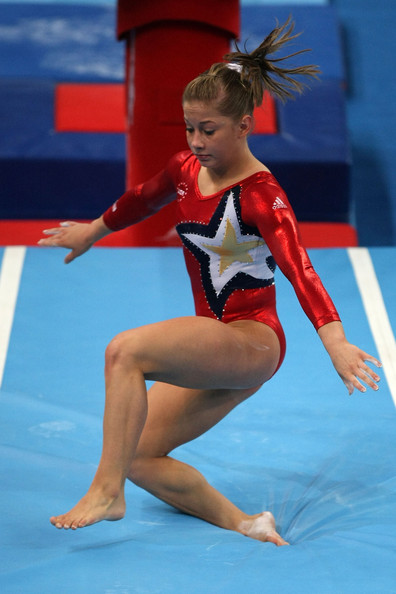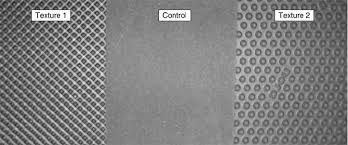The Barefoot Advantage: Understanding Surface Science

It’s been well accepted that footwear changes the proprioceptive input between  foot and ground. Despite consumer associations between cushion and comfort, a 1997 study by Robbins et al. has demonstrated that increased cushion in shoes actually decreases foot position sense and alters overall stability. This same study by Robbins et al. further demonstrated that the ideal shoe for improving balance and stability is a thin, hard-soled shoe.
foot and ground. Despite consumer associations between cushion and comfort, a 1997 study by Robbins et al. has demonstrated that increased cushion in shoes actually decreases foot position sense and alters overall stability. This same study by Robbins et al. further demonstrated that the ideal shoe for improving balance and stability is a thin, hard-soled shoe.
From Shoes to Surfaces
We can take the concept of stiffness and cushion from shoes to surfaces. When it comes to surface science and innovation much attention has been given on the topic of landing techniques and surface stiffness. Similar to shoes, when it comes to surfaces - stiffness wins again!
Surfaces vibrate and deform upon contact with the degree of vibration being dependent on surface stiffness. Anyone who has taken a workshop with EBFA should remember that vibration is how our foot proprioceptors and nervous system knows how hard we are stirking the ground. This information is critical to optimizing landing technique and the subjecquent loading response.
 A review article by Marinsek et al. found that the ideal mat for optimal landing techniques in elite gymnasts was a stiffer mat that not only created vibrations but also had the capability of damping the excess impact forces. Marinsek et al. further emphasized the need for pre-activation muscle tension occurring up to 170ms before foot contact. This concept which is often research by Nigg et al. is a critical component to the Barefoot Training Specialist® Certificiaion by EBFA.
A review article by Marinsek et al. found that the ideal mat for optimal landing techniques in elite gymnasts was a stiffer mat that not only created vibrations but also had the capability of damping the excess impact forces. Marinsek et al. further emphasized the need for pre-activation muscle tension occurring up to 170ms before foot contact. This concept which is often research by Nigg et al. is a critical component to the Barefoot Training Specialist® Certificiaion by EBFA.
Proprioceptive Responses to Texture
Another feature of surface design that must be considered, especialy when it comes to barefoot training, is texture.
Texture perception is one of the stimuli unique to the small nerve proprioceptors of the plantar foot. A key thing to remember when it comes to texture is that not all texture is the same!
A 2011 study by Hatton et al. set out to find the most effective texture when it comes to improving proprioceptive feedback from the foot. Hatton et al. compared two different shapes and sizes of texture (pictured right).
improving proprioceptive feedback from the foot. Hatton et al. compared two different shapes and sizes of texture (pictured right).
What was fascinating is that Texture 1 improved balance and stability while Texture 2 actually threw off balance!
It is important to note that the greatest improvement in balance with Texture 1 was when the subjects eyes were closed. The reason for this observation is that when you take away one of the input systems (eyes, ears, joints, skin) the nervous system seeks out the other input systems. In this case it was the plantar foot that was over-recruited to maintain balance.
Application to Practice
To recap some of the features you want to look for in a surface especially when barefoot training or during barefoot sports include:
- Stiffness - to allow optimal vibrations
- Damping - to offset the excess vibration during dynamic movement
- Texture - to uniquely stimulate the small nerve proprioceptors in the plantar foot
Naboso Technology launches into Surface Innovation
We are extremely proud to announce that the newly launched Naboso Technology created by EBFA Global includes all these surface science features. From the unique patent-pending material of the Naboso Training Mat to our Naboso Textured Insoles we are changing the way fitness, performance and rehab looks at surface science.
To learn more about Naboso Technology or to order your Naboso Yoga Mat please visit www.nabosotechnology.com
In health,
Dr Emily Splichal
Founder EBFA Global
www.ebfaglobal.com
References
Hatton, A. Standing on Textured Surfaces: Effect on Standing Balance in Healthy Older Adults (2011). Age Ageing 43: 363 - 368.
Marinsek, Miha. Basic Landing Characteristics and their Applications in Artistic Gymnastics. 2(2): 59-67.
Robbins, S. The Effect of Footwear Midsole Hardness and Thickness on Proprioception and Stability in Older Men (1997). J Testing Evaluation 25(1): 143 - 148